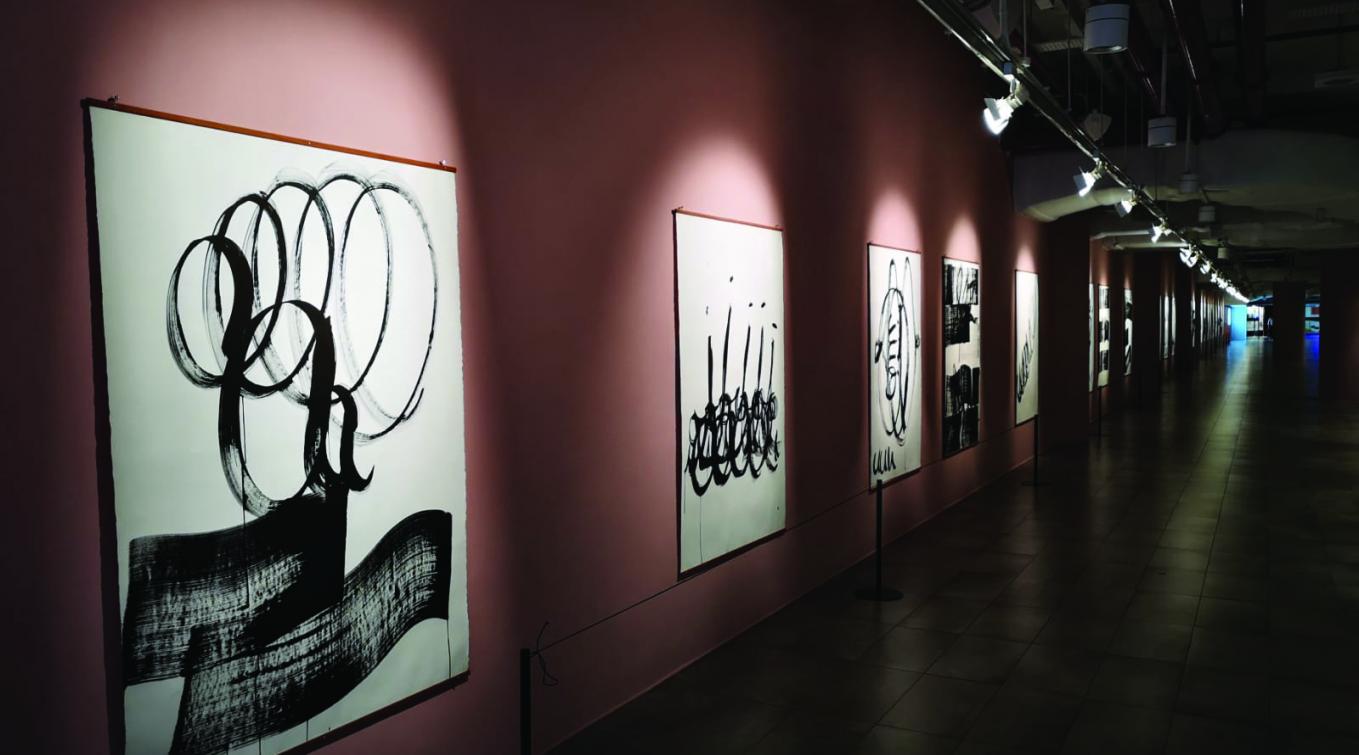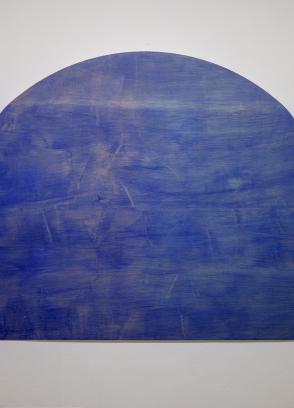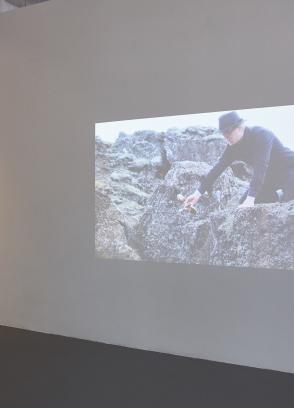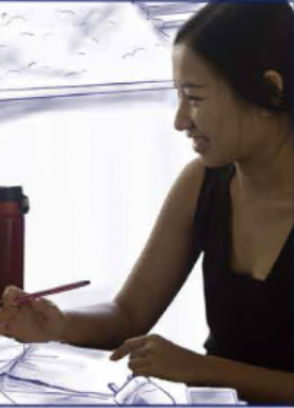Jeremy Sharma, Say Ocean, 2019. Installation of sumi ink on paper and audio. Dimensions variable
by Vaishnashri Meynon S, BA(Hons) Fine Arts Level 2 (2019)
Mediated Realities made me feel like I was in a time warp, finding my way through past memories that were captured and conveyed artistically with the use of materials and mediums. All four, that took place in various spaces of Esplanade, twisted one’s perception of reality, invoked a sense of nostalgia, giving the viewer an experience of an energy that was once present, unfolding its own story.
The exhibition in the Tunnel was Jeremy Sharma’s Say Ocean. Comprising 24 gestural ink drawings, the work was accompanied by 24 recordings in local dialects that are not commonly spoken in Singapore. Using the recordings as material, he edited his recordings to disrupt their natural flow to create a unique musical auditory experience.
Each recording contained a participant speaking in his or her own language about a personal experience growing up, a favourite food and colour followed by the memories of the sea. I was one of the participants; I spoke Malayalam. It is one of the 22 languages that is spoken in India. I recall feeling calm during the recording despite a rush of a sea of emotions as I spoke in a language that reminded me of my late grandmother. However, after listening to all the remade recordings live in the Tunnel, I was aware that every recording carried a different tone expressive of the personal emotions that came with the individual memories. The recordings were played one after another, reminding me of waves building up gradually before they hit the shore. These sounds stopped people who passed through the Esplanade Tunnel to listen to what they perceive as the familiar strains of the waves, and to also discover where the sounds came from. The 24 drawings accompanying the voice recordings gave a visual cue to the sounds that wove together as they echoed through the tunnel.
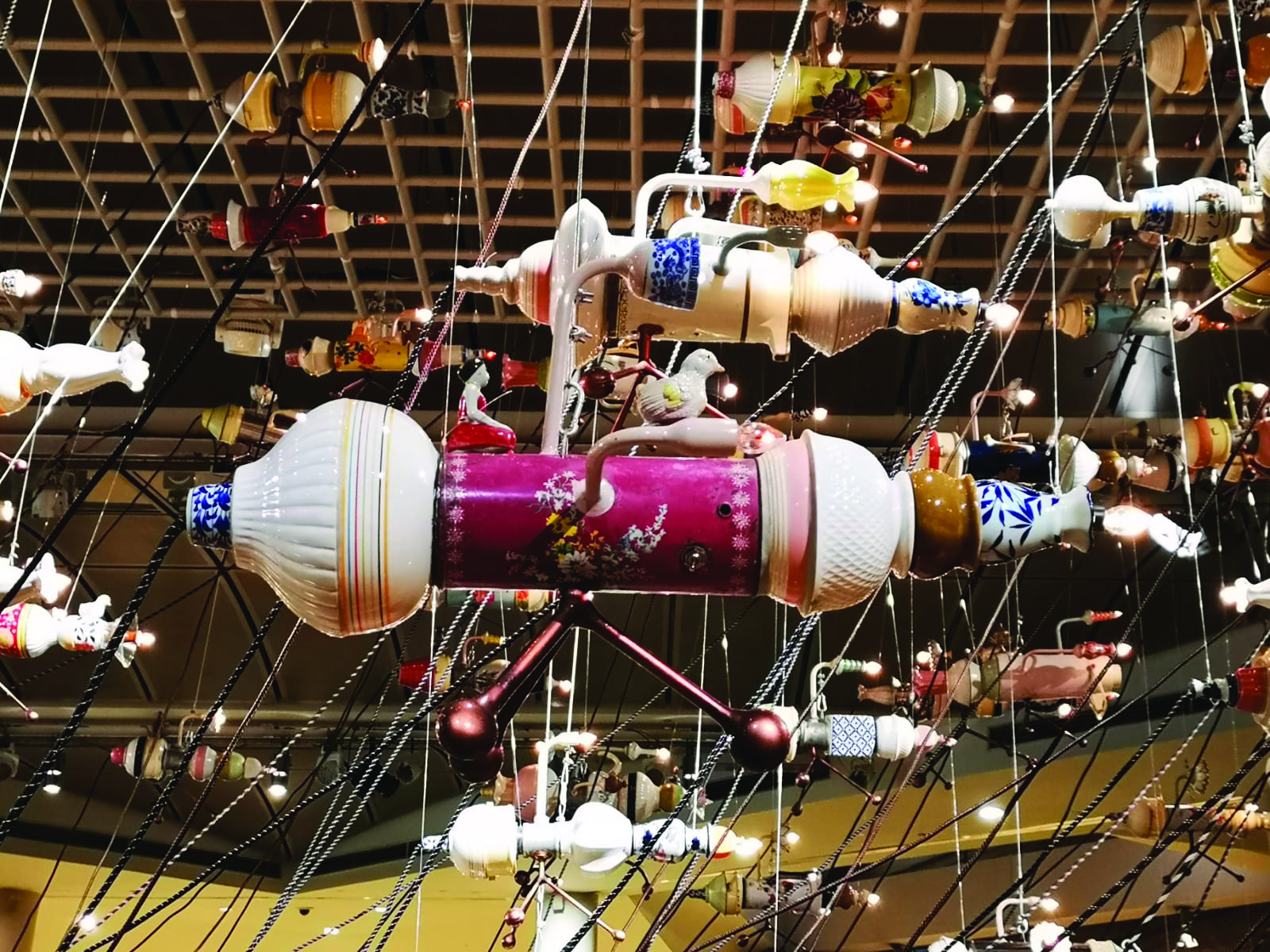 Torlarp Larpjaroensook, Insignificant Meaningful, 2019. Ceramic, enamel ,wood and brass. Dimensions variable
Torlarp Larpjaroensook, Insignificant Meaningful, 2019. Ceramic, enamel ,wood and brass. Dimensions variable
My trail continued to level 1 Concourse of the Esplanade where Torlap Larpjaroensook’s Insignificant Meaningful stood tall. This piece was impossible not to notice due to its large scale.
Torlarp utilises everyday ordinary objects that carries symbolic meanings in different Asian countries and culture to remind us of the interweaving nature of our societies. Lunch boxes, thermos flasks, vases, plates and bowls, made from different materials such as enamel, wood and ceramic were put together to create a huge assemblage piece. These everyday objects reflected the Chinese, Indian, Thai, Malay and Peranakan culture.
The whole installation had different components to it. The longer I looked at it, the more I felt like I was travelling through time. Torlap’s installation consisted of found objects that induced a sense of nostalgia. I could not help but notice the reoccurring lightbulbs throughout the assemblage that lit every piece in the installation, creating a warm ambience. As a whole, the structure looked like a time machine of memories sailing through time with the assembled objects hanging like a sail from the body of the brass sculpture of two rotatory propellers.
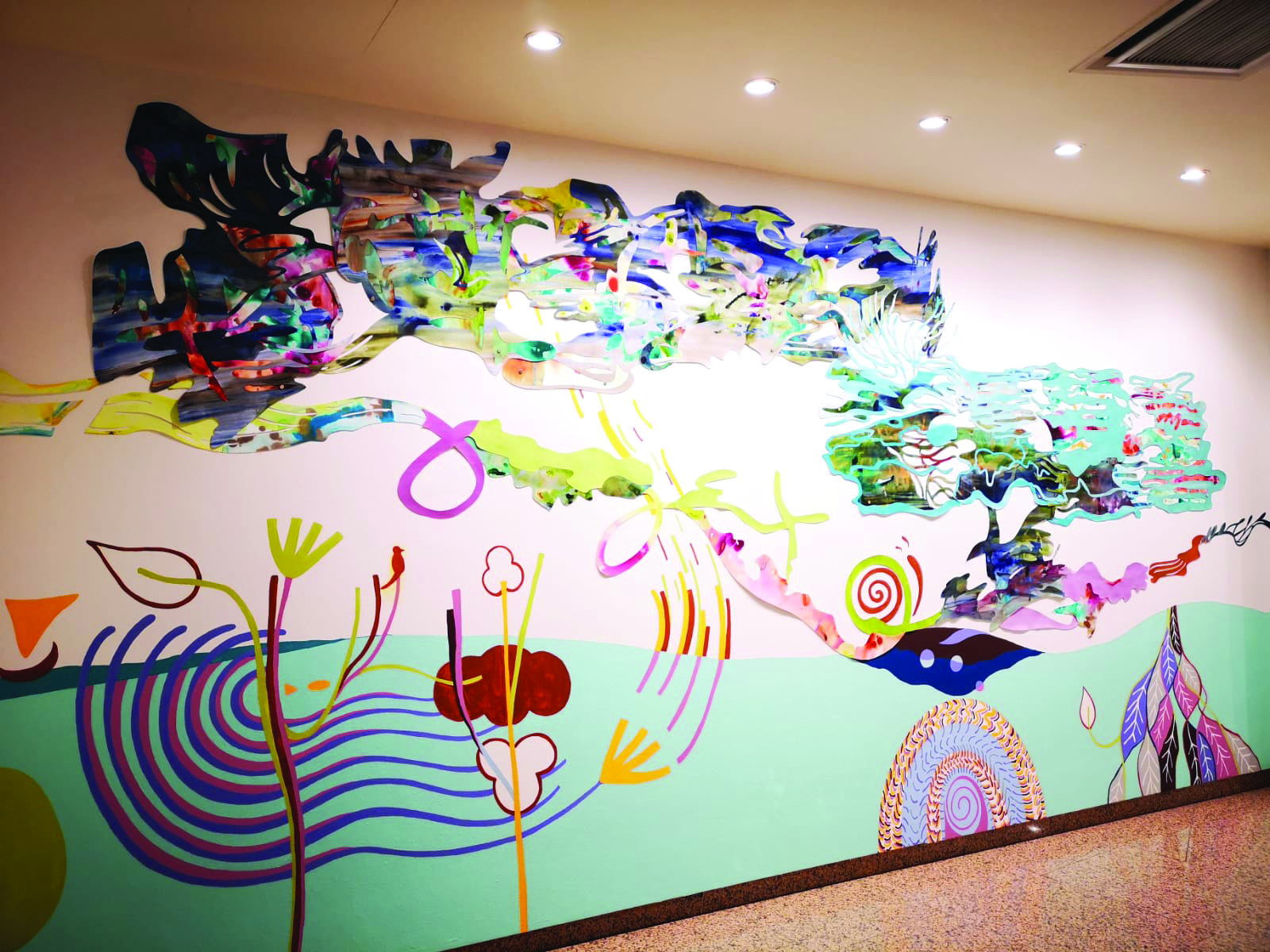 Danielle Tay, This tree sees, 2019. Mix media, collage. Dimensions Variable
Danielle Tay, This tree sees, 2019. Mix media, collage. Dimensions Variable
Danielle Tay’s This tree sees was about trees witnessing the movement of time through generations. Trees have the ability to adapt to urban development and the changes in our living environment. Her installation was a mixed media collage exploring the idea of flux from a tree’s perspective. Danielle believes that trees are collectors of memories and keepers of moments that change as the world evolves. Throughout her wall installation, her work flowed and broke up into smaller fragments, building up on layers and textures.
The idea of flux/flow was visually present in her collages as they were shaped in a whimsical manner swishing you from one piece to another. With the immediate surroundings being well air-conditioned, I enjoyed the work in the still and quiet space as night came and the busy commuters gone. Looking at her installation gave me a surreal experience of a summer breeze.
Moving to level 2 of Esplanade Mall, in the Jendela (Visual Arts Space), I found Zen Teh’s Mirror of Water. Zen Teh investigates the effects of water pollution in Singapore, focusing on the oil-like residue that is found in our canals. Even though this is an environmental concern which affects the health of the mangrove forests and coastal ecosystems in Singapore, the oil-like residue visually creates a iridescent quality in Teh’s work which was extremely captivating. I learned that this happens due to light reflecting off the surface of the water.
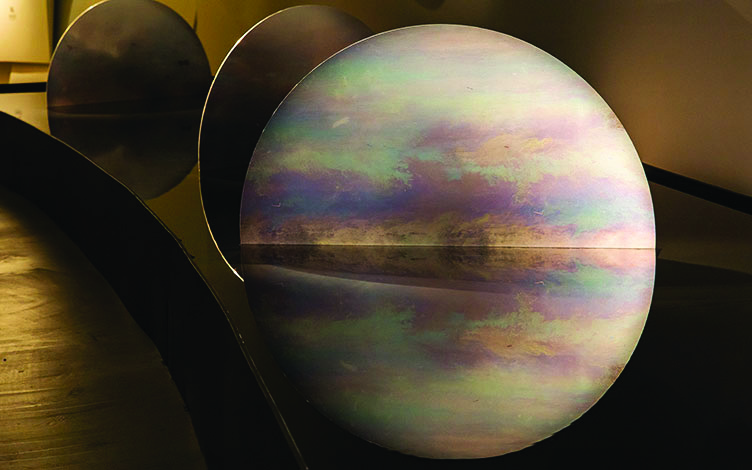 Zen Teh, Mirror of Water, 2019, Mirror, water and oil. Dimensions Variable
Zen Teh, Mirror of Water, 2019, Mirror, water and oil. Dimensions Variable
In my opinion, the mirror sculptures reflecting off the oil residue held a spitting image of the sky. Here, I was reminded of Nature’s ‘five elements,’ but I had no time to develop that thought at the time as I continued my journey to level 3 of the Esplanade’s community wall.
The four commissioned artworks looked at our everyday happenings, memories and the environmental effects on our earth. Again I cannot help but dwell on Nature’s ‘five elements.’ Being part of the Indian culture the ‘five elements’ are called the Panjabootha, which consists of water, fire, sky, air and land. The Panjabootha holds a great significance in my tradition; therefore it was with a sense of familiarity that I began to appreciate all four works, like I was decoding a part of this exhibition. I was amazed and wonder at how the artworks through ‘the five elements,’ shifted my perception of reality and consequently, also shifted the way I perceived the world.

